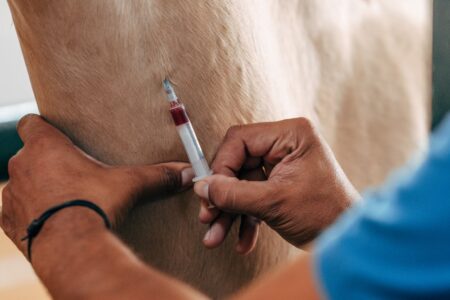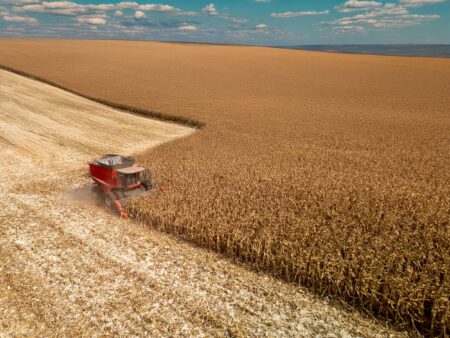Recent threats of drastic cutbacks in federal funding for agricultural conservation programs have prompted me to recall a campaign I worked on at Successful Farming many years ago, “Conservation on Your Own.”
The idea, which was developed in cooperation with a colleague at USDA, involved promoting eight conservation practices that farmers could accomplish more or less without any outside financial or technical support.
The do-it-yourself practices in the “Conservation on Your Own” package of stories and video production featured detailed steps for managing (and measuring) crop residue, establishing contour buffer strips, planting field windbreaks, maintaining cropland terraces, and more. The practices required no special technical assistance or cost sharing.
The tools needed for the projects were simple and inexpensive: measuring tapes, flags, hand levels, measuring wheels and the like, as well as maybe a few implements readily available on any farm. Supplies were easy to find through soil and water conservation district offices or at farm supply stores.
A History of Help
Going back to the Dust Bowl days of the 1930s, U.S. farmers have long been well served by government programs to stem soil erosion and promote clean water. More recently, federally funded efforts dedicated to helping farmers address climate change were putting U.S. agriculture at the vanguard of action on the global issue.
It may be disagreeable that funding for a wide range of federal programs, such as the Conservation Stewardship Program (CSP) and the Environmental Quality Incentives Program (EQIP), have been frozen and possibly cut substantially. But it also occurs to me that the old do-it-yourself approach is still right there for any farmer to follow. And in fact, sometimes it’s simpler and just as effective to proceed on your own without governmental strings and paperwork.
Past examples of “Conservation on Your Own” on our small Nebraska farm start with what we haven’t done. We haven’t plowed our pasture, for example. In another case, one small field, once in an expiring CRP contract, turned out to be easier and simpler to manage as a hay field than to maintain in a government program. Leaving snags in our oldest windbreak, as well as volunteer shrubs and trees in some field borders, has provided excellent cover for birds and other wildlife.
John Walter
Use Available Resources
Conservation tillage has become standard on the cropland—a practice that, of course, can add to the bottom line while saving soil. And no doubt today, as back in the day, the advice in our “On Your Own” crop residue management section rings true: “The main thing about managing residue is to consider how quickly it gets away, especially in spring,” wrote Rich Fee, former crops and soils editor for Successful Farming.
Sometimes, you can make do with what’s left over or gone before. As an example, we took extra tree seedlings from a CRP cost-shared windbreak planting and used them to start a farmstead windbreak.
At another point in the farm’s history, one field with outmoded, hard-to-farm terraces was swapped out with contour farming and reduced tillage.
Of course, there has been occasion to reach for available outside resources. Our operator borrowed a special drill from a local conservation agency to plant a pollinator habitat on a newly re-enrolled CRP field. Pheasants Forever provided native plant seed and helped oversee the planting. Our CRP windbreak planting was enabled with a tree planter on loan from the local soil and water conservation district.
John Walter
Homemade Grass Buffer
A recent example of a do-it-yourself conservation project on the place is a grass buffer we established on a crop field that was subject to regular gully erosion. (“Control small gullies with grass” was one of the practices featured in the old “Conservation on Your Own” project.)
Our farm operator, Kevin Schroeder (pictured above), inquired with USDA-NRCS about cost-sharing and technical assistance. A conservation technician visited the farm to draw up a plan, which involved some considerable structural work and more expense than we’d expected.
In the end, we decided on a do-it-yourself approach. Kevin and his dad, Harley, mapped out a three-acre buffer strip, shaped, fertilized and seeded the area, then took care to work around the newly established plot when farming the bordering cropland. In the first couple years after establishment, the gulley and sheet erosion were visibly reduced. Some 10 years later, soil health in the area has been improved. Recent soil tests showed improved soil carbon and soil organic matter levels in the buffer, too.
Clearly, history shows that local, state and federal programs can help farmers make great progress with soil, water and wildlife conservation. But if you’re privileged to have lived long enough to watch a farm evolve, you learn that the farmer’s footsteps on the land — the do-it-yourself approach — is the key factor in effective conservation.


:max_bytes(150000):strip_icc()/Screenshot2025-04-11at2.12.23PM-41309f5811d642f0bf1539f0153a4f22.png)
:max_bytes(150000):strip_icc()/WackerNeuson_SSL_Farm1-cd354e4ebf3b43d3aca472d21fa84daf.jpg)
:max_bytes(150000):strip_icc()/Wheat_500x500_3-1-1c0a4a5c1908441393a1e02947749992.jpg)



